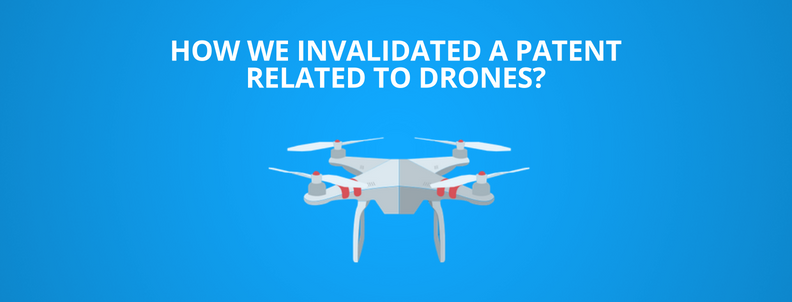Drones fascinate me. They are wonderful tools of entertainment and transportation and has so much potential, which, if fully explored can change the way mankind transports. Technology companies around the globe, are researching the solutions for the problems of the domain and it would only be a matter of time before drones are everywhere. TBH, I’m waiting for the day a drone drops “A song of Ice and Fire” book series at my doorstep.
So, let’s come to the main point of discussion where we had to find the prior art related to a blade locking mechanism of a Drone.
We started a preliminary search for the design of drone blades and their locking mechanism with driveshafts. After a few hours of search, we found an important clue. A researcher named, “Abe Karem” known by the moniker of “drone father” was mainly involved in the research regarding UAV near the cut-off date. So we tried to track down the publications of this author in hopes to find relevant prior art. Unfortunately, this approach was in vain.
Never the ones to be deterred, as next step, we checked some system prior art and patents of some potential companies working in the field like Dromida, DJI Technology, American Institute of Aeronautics and Astronautics and Federal Aviation Administration. As the first impression in this search, we felt that checking these system prior art may lead us to the required output. But those products were not clear about the locking mechanism used either.
We had to find another way. So far, we had already checked in patent and non-patent literature. A substantial amount of time in this project had already been spent, and we only had some state of the art type references on our plate and nothing was substantial enough to invalidate the patent.
It was at this moment when a thought struck us – Why not try YouTube?
It was this very place where I first saw a drone and those videos made me curious about the subject matter, and they were the ones that made me submit to the awe of this ingenious piece of invention.
There was a possibility that someone would have uploaded some video related to a drone assembly and the required locking mechanism.
Given that we had little time till the deadline and no other approaches left, we started watching videos of Drones. 😀
We watched videos related to drone assembly – A new challenge and opportunity came up as there were 1000s of such videos related to “how to assemble a drone”. So, we ran this key-string “drone assembly and locking mechanism”.
And bang! It made everything easy. There were only 10 such videos and diligently we started watching videos one by one. 7th on the list was a 5-minute video, which portrayed the locking mechanism that needed to be invalidated.
To add to it, the video mentioned a model number of a DJI drone. We quickly checked the availability of this model on the DJI website. We found the user manual which was not available via Google search. To our amazement, it was published before the cut-off date. This turned out to be a strong prior art which had the capability to invalidate the patent by itself.
We still had a few hours left till the deadline and we sent the results to the client. He was elated and conveyed that the other vendor they contacted for similar search returned with No results and they did not think it was possible to find prior art for this patent and yet thought that we could be trusted with finding prior art.
Well, we lived another day meeting client expectations and raising the performance bar.
Analysis performed by – Navneet Kaur (Research Analyst) and Prasun Pal (Senior Research Analyst)
Related Case: How A Mobile App Helped Us Find Relevant Prior Art In An Invalidity Search?









